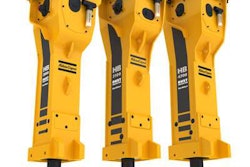 (Norcross, Ga., 20 April 2010) This summer the intricacies of New York City’s urban fabric will be presented in a new light thanks to an exciting partnership between Leica Geosystems and two research fellows with Manhattan’s Van Alen Institute. Beginning in mid-May 2010, Leica Geosystems High-Definition Surveying (HDS™) technology will be used to scan the narrow street canyons of Lower Manhattan to capture the complex spatial qualities within the city’s historic Dutch street grid. The results will be displayed at a public exhibition to be held in August 2010 at the Van Alen Institute’s Manhattan gallery space with videos, 3d printed models and photographic prints of 3d meshes & point clouds.
(Norcross, Ga., 20 April 2010) This summer the intricacies of New York City’s urban fabric will be presented in a new light thanks to an exciting partnership between Leica Geosystems and two research fellows with Manhattan’s Van Alen Institute. Beginning in mid-May 2010, Leica Geosystems High-Definition Surveying (HDS™) technology will be used to scan the narrow street canyons of Lower Manhattan to capture the complex spatial qualities within the city’s historic Dutch street grid. The results will be displayed at a public exhibition to be held in August 2010 at the Van Alen Institute’s Manhattan gallery space with videos, 3d printed models and photographic prints of 3d meshes & point clouds.
Over the past two centuries, Leica Geosystems has written precise measurement history with groundbreaking technological innovations and an unwavering dedication to quality. Likewise, for 116 years, the non-profit Van Alen Institute has been at the center of advocacy for excellence in architecture and public design through fellowships, forums, workshops, competitions, exhibitions and publications. Bringing these two remarkable institutions together are researchers Han & Mihalyo, who together are partners in the Seattle-based art and architecture collaborative Lead Pencil Studio. Their broad ranging investigations into the built environment have earned them awards from the Architecture League of New York, the American Academy in Rome and the Graham Foundation Together, these three entities are partnering on this research project to explore new methods for quantifying the complexity of cities and to discover new uses for this groundbreaking technology — High-Definition Surveying™.
Begun as a tool principally for industry and geosciences, Leica Geosystems laser scanners have found practical uses in an ever expanding field of disciplines that require measureable documentation. It is natural then that architects, engineers, urban planners, film makers and artists would soon be inspired to discover innovative applications for this powerful equipment.
“I view Leica HDS™ as the most significant invention in imaging since the camera. This technology is revolutionizing the way we understand and measure the world”, says Mihalyo. “We became keenly interested in this tool since first seeing point cloud data at the Seattle Department of Transportation in 2002. Ever since then we have been eager to let loose the HDS’s power of observation onto New York City – once considered too complex to capture. After preliminary use and training in Italy of this equipment in 2008, we know that the results are going to be spectacular and open many eyes.”
As the first known trained architects with artistic background to use this Leica Geosystems equipment exclusively for creative research, the results are bound to be interesting and eagerly anticipated.
For information on the latest HDS™ technology – https://leica-geosystems.com/en-us/products/laser-scanners?redir=1
Details about the August exhibition dates, openings and talks will be established by June 2010. Interested parties are encouraged to check the Van Alen Institute’s website – www.vanalen.org
Leica Geosystems – when it has to be right
With close to 200 years of pioneering solutions to measure the world, Leica Geosystems products and services are trusted by professionals worldwide to help them capture, analyze, and present spatial information. Leica Geosystems is best known for its broad array of products that capture accurately, model quickly, analyze easily, and visualize and present spatial information.
Those who use Leica Geosystems products every day trust them for their dependability, the value they deliver, and the superior customer support. Based in Heerbrugg, Switzerland, Leica Geosystems is a global company with tens of thousands of customers supported by more than 3,500 employees in 28 countries and hundreds of partners located in more than 120 countries around the world. Leica Geosystems is part of the Hexagon Group, Sweden.














